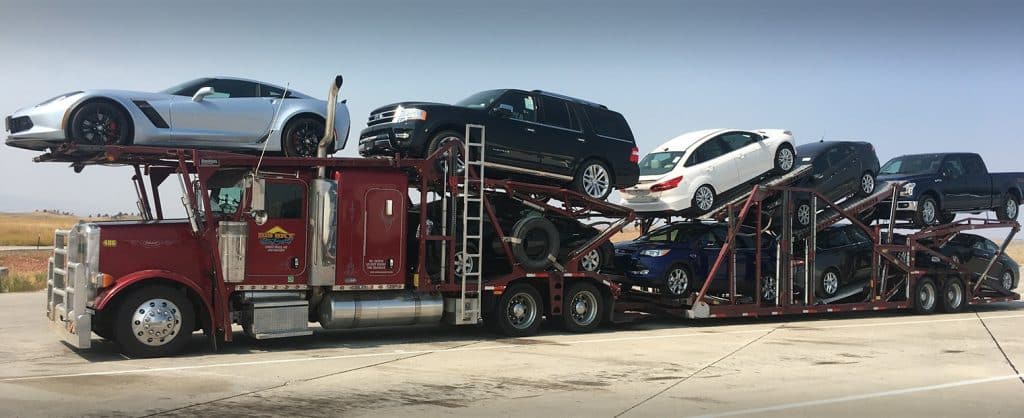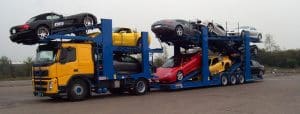Understanding The Logistics Of Shipping Non-Running Vehicles
Shipping a non-running vehicle can be a complex process that requires careful planning and consideration. Unlike running vehicles, non-operational cars present unique challenges and require special arrangements to ensure safe transportation. Understanding the logistics involved in shipping non-running vehicles is crucial for a smooth and successful delivery.
Firstly, it is important to choose a reputable auto transport company that specializes in shipping non-running vehicles. These companies have the necessary equipment and expertise to handle such shipments effectively. They will use specialized trailers or equipment like winches to load and unload your vehicle safely.
Additionally, when shipping a non-running vehicle, it is important to provide accurate information about its condition to the auto transport company. This includes details about why the vehicle is not operational, such as mechanical issues or missing parts. The more information you provide, the better prepared the transport company will be to handle your shipment.
Moreover, it is essential to communicate any specific requirements or restrictions related to your non-running vehicle. For instance, if your car has no brakes or steering capabilities, special arrangements may need to be made for loading and unloading purposes.
By understanding these logistics and working closely with an experienced auto transport company, you can ensure that your non-running vehicle reaches its destination safely and efficiently.
Factors To Consider Before Shipping A Non-Running Vehicle
Transporting a non-running vehicle requires careful planning and consideration. Whether you need to move a classic car restoration project or an old family car that no longer runs, here are some crucial factors to keep in mind before shipping your non-running vehicle. Firstly, it is essential to communicate with the auto transport company about the vehicle’s condition. They need accurate information regarding its operability to determine the appropriate equipment and methods required for safe transportation.
Be prepared to provide details such as whether the vehicle has functional brakes, steering, or tires. Next, consider any additional services you may require. For instance, if your non-running vehicle is in an inaccessible location or lacks wheels for rolling onto a carrier, specialized equipment like winches or forklifts might be necessary. Discuss these requirements with the transport company in advance so they can make suitable arrangements.
Moreover, ensure that all loose parts and accessories are secured or removed from the vehicle before transportation. This precaution will prevent damage during transit and reduce any liability concerns. Lastly, factor in extra time for both pickup and delivery when shipping a non-running vehicle. It may take more effort and time to load and unload compared to running vehicles. Therefore, setting realistic expectations will help avoid unnecessary stress during the transportation process.
Finding The Right Auto Transport Company For Non-Running Vehicles
Finding the right auto transport company for non-running vehicles is crucial to ensure a smooth and hassle-free shipping process. When it comes to transporting non-running vehicles, you need a company that specializes in handling such situations.
Firstly, look for an auto transport company with experience in shipping non-running vehicles. They should have the necessary equipment and expertise to safely load, secure, and transport your vehicle without causing any further damage. Check if they have successfully transported similar vehicles in the past.
Secondly, consider the company’s reputation and customer reviews. Look for feedback from previous customers who have shipped non-running vehicles with them. Positive reviews indicate reliability and professionalism.
Additionally, verify if the auto transport company has insurance coverage specifically for non-running vehicles. Accidents or damages can happen during transportation, so it’s important that your vehicle is protected throughout the journey.
Lastly, compare prices and obtain quotes from multiple companies before making a decision. While cost is an important factor, remember that quality of service should not be compromised.
By taking these factors into consideration when selecting an auto transport company for your non-running vehicle, you can ensure a stress-free shipping experience with minimal risk of damage or delays.
Essential Preparations For Shipping A Non-Running Vehicle
Shipping a non-running vehicle requires careful planning and preparation to ensure a smooth and successful transport. Here are some essential steps to take before shipping your non-running vehicle:
1. Thoroughly inspect the vehicle: Before shipping, conduct a detailed inspection of the vehicle’s condition. Take note of any existing damage, scratches, or dents. It is also crucial to document any mechanical issues or problems that could affect the shipping process. 2. Inform the transport company: When booking with an auto transport company, it is crucial to inform them that your vehicle does not run.
This will allow them to make necessary arrangements and provide you with accurate pricing. 3. Secure loose parts: Remove any loose parts that could detach during transit and cause damage. This includes spoilers, mirrors, antennas, or detachable accessories. Secure these items properly or store them separately during transportation. 4. Check for leaks and fluid levels: Ensure there are no leaks from the vehicle that could pose a risk during transportation.
Additionally, check fluid levels such as oil, coolant, and fuel; it is recommended to keep these at minimum levels. 5.
Common Challenges And Solutions When Shipping Non-Running Vehicles
Shipping non-running vehicles can present unique challenges that require careful planning and consideration. One common challenge is the lack of mobility, as non-running vehicles cannot be driven onto a carrier or loaded onto a trailer like operational ones. In such cases, special equipment like winches, forklifts, or cranes may be required to safely load and unload the vehicle.
Another challenge is ensuring the vehicle remains secure during transit. Non-running vehicles may have faulty brakes or steering systems, making them more susceptible to shifting or rolling during transportation. To address this issue, experienced auto transport companies often use additional securing methods such as wheel chocks, straps, and chains to immobilize the vehicle and prevent any movement.
Furthermore, proper documentation is essential when shipping non-running vehicles. Carriers need accurate information about the condition of the vehicle to ensure appropriate handling and safety measures are implemented. Providing detailed information about any mechanical issues or damage helps carriers plan accordingly and avoid potential complications during transit.
Lastly, communication between the shipper and carrier is crucial throughout the process to address any unforeseen challenges that may arise. Clear communication ensures both parties are aware of specific requirements and can work together to find suitable solutions tailored to shipping a non-running vehicle safely and efficiently.








